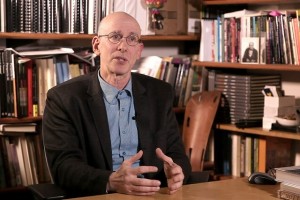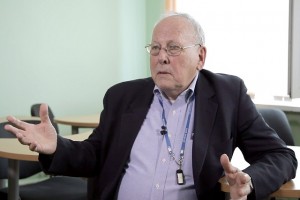Carl Friedrich Gauss
Mathematician and Historian of Mathematics Jeremy Gray on the theory of quadratic forms, the rediscovery of Ce...
When does the architecture begin? How can a pit house explain global migrations and reveal links between the Navahos and the first men in Europe? MIT Professor of the History and Theory of Architecture, Mark Jarzombek, reconsiders usual view on primitive cultures.
Part of my argument is that we still live a the first society world. And in the some sense, even though we don’t have all the attributes of the first society anymore: we don’t have shamans, we don’t have ritual dances that we go to on moonlit nights and all these other things, we still are living in their world. So if we write a history that assumes that their world is finished, then comes the next stage of advancements and then comes the next stage of advancement, and that these original first-society peoples are in some sense backwards or behind the times, we’re really missing the point that the first society people still exist, we’re still living in their world and, perhaps, we should write the history a little bit from that perspective.
One I do in the book was the view that the native society population is still there, and still we’re on the power position when we can easily exterminate them with the flick of a finger, practically. So is that what we want? Do we want to be the generation that prides itself of exterminating the last of the first societies? I hope not.
The primitive here is sort of temporary, it’s sort of tactical, it’s used to make sheds and so forth. And yes, there is a sort of quality that sometimes we can look at in how people embrace certain materials to produce temporary architecture. So the yearly renovation of that society bounds it in a very flexible way. Compared to our most ethic notion of the society, sort of fixed, and solid, and immobile, here the reason that they have survived for tens and hundreds thousand years is that every year they renew that through the architecture production. So, this is hardly primitive, one can rapidly find a lot of things to admire about this yearly production of architecture.

Mathematician and Historian of Mathematics Jeremy Gray on the theory of quadratic forms, the rediscovery of Ce...

Professor Mark Jarzombek on what Buddhist temples express, transfer of architectural techniques, and the Euroc...

Historian of science Loren R. Graham on the mistakes Russian leaders make, intellectual property and risky inv...